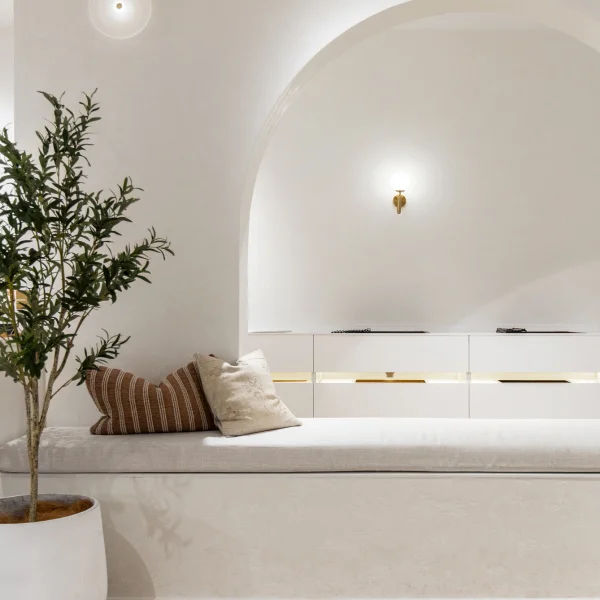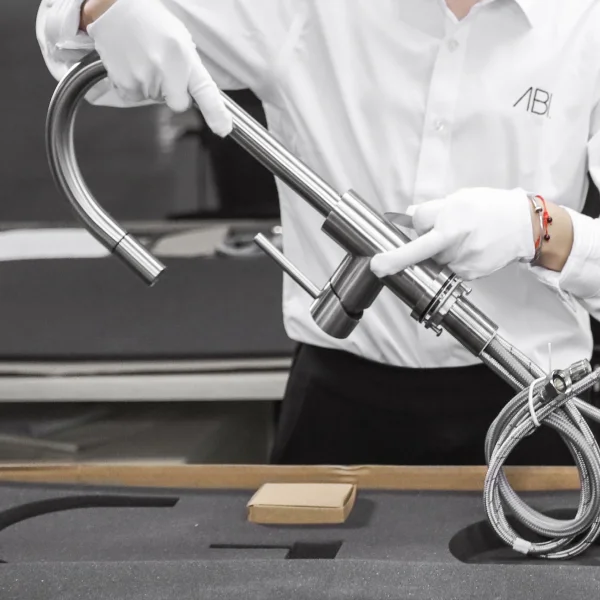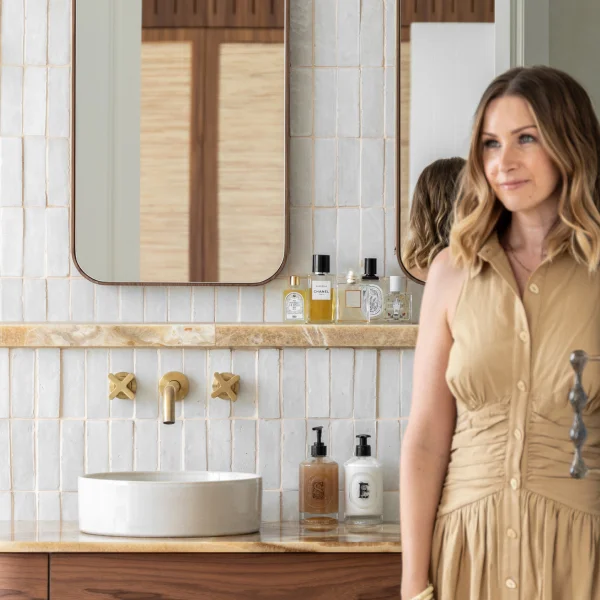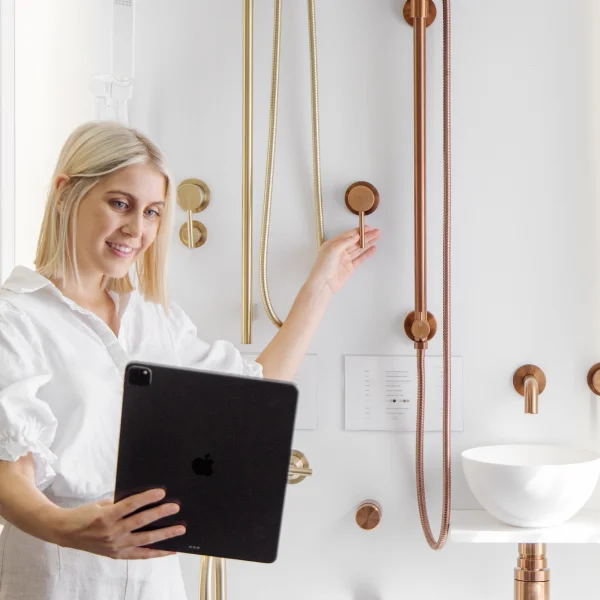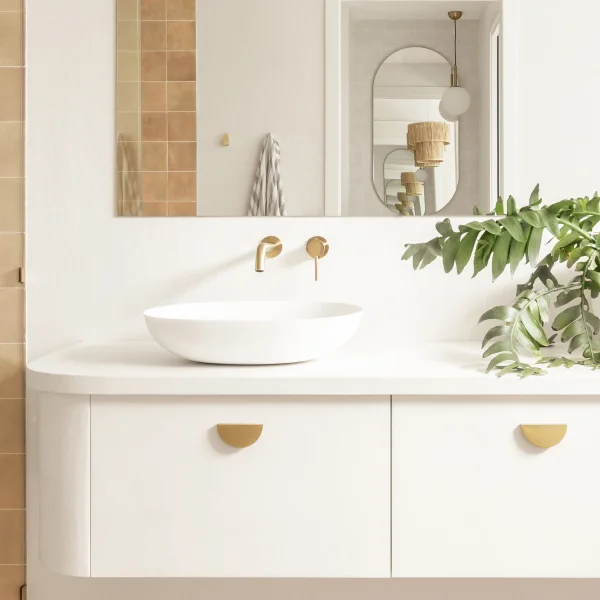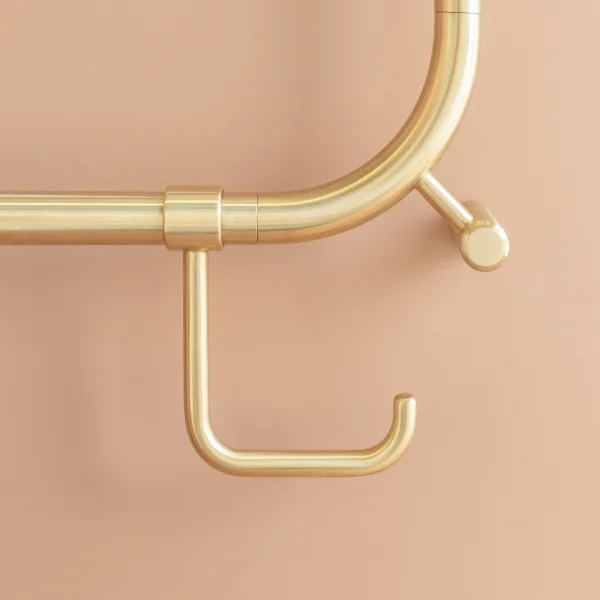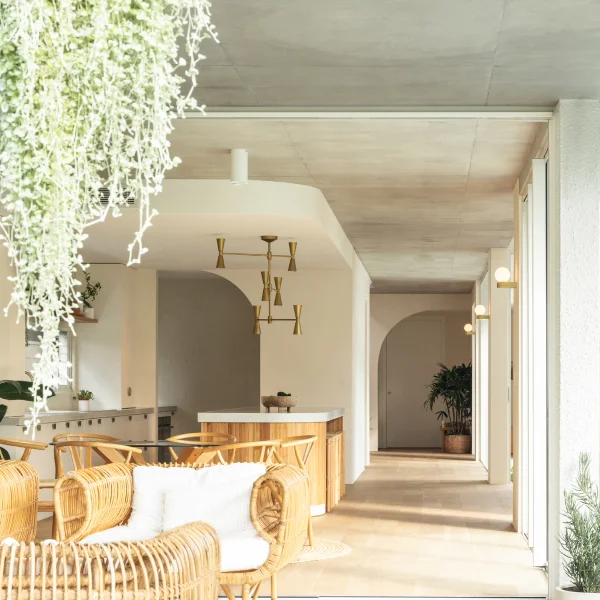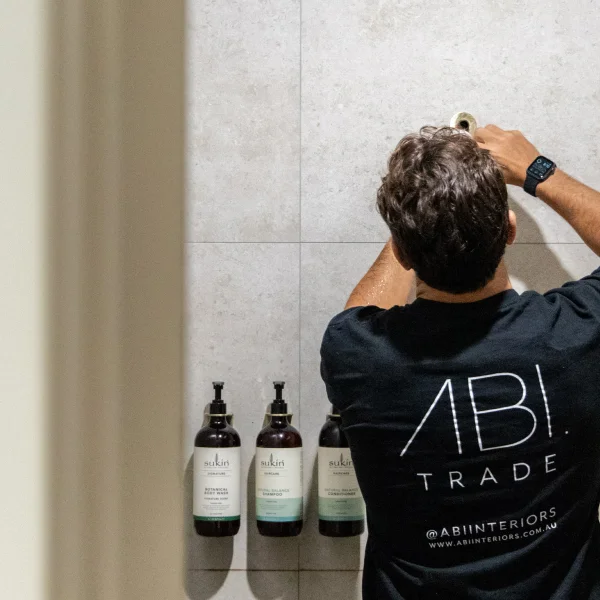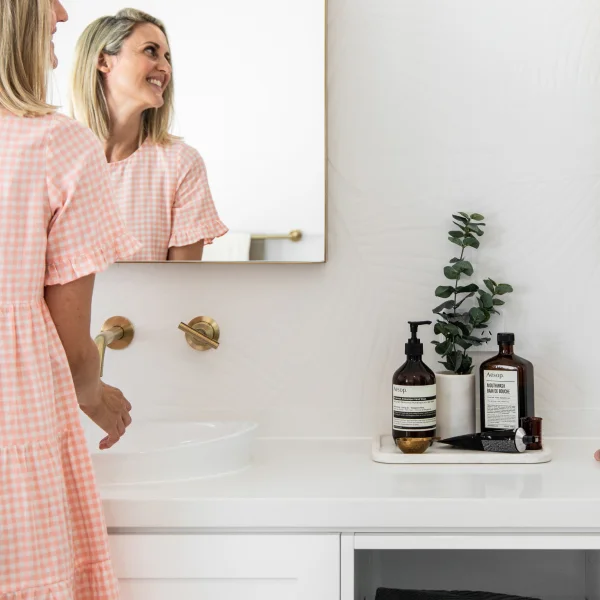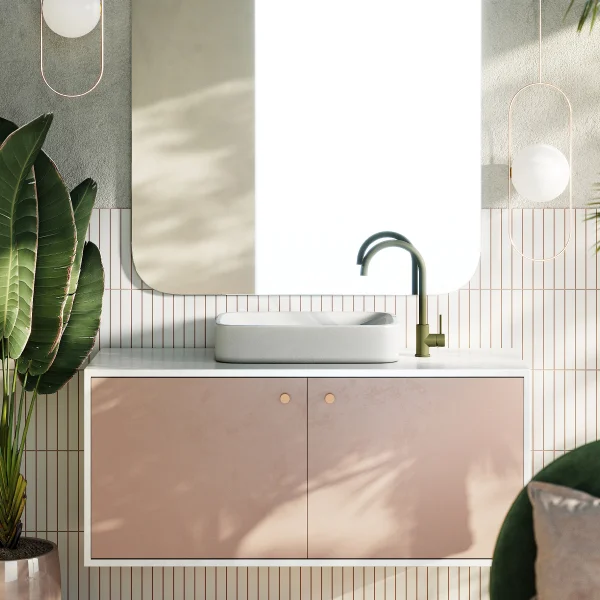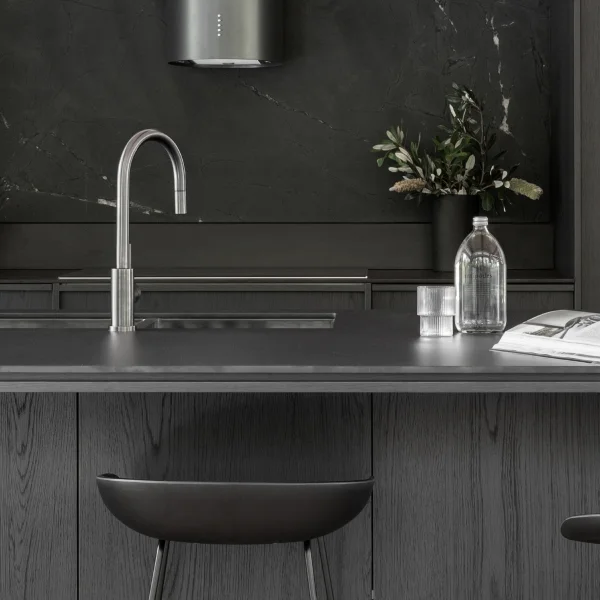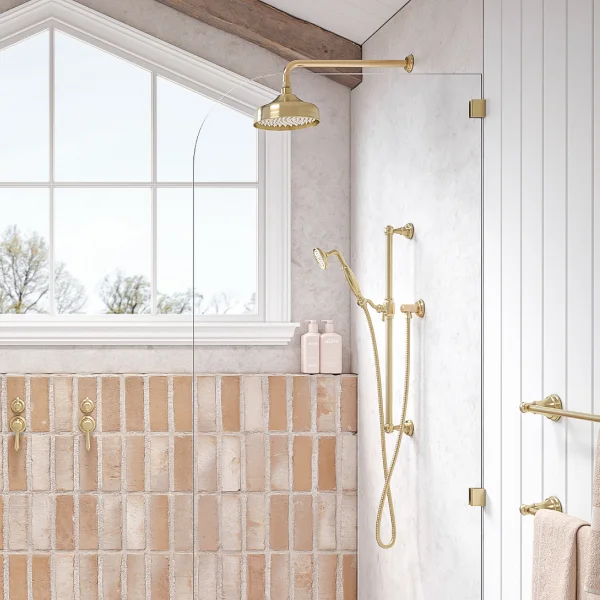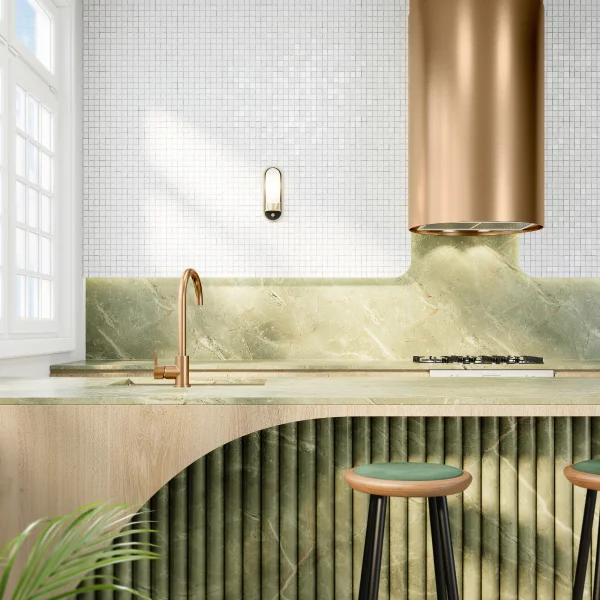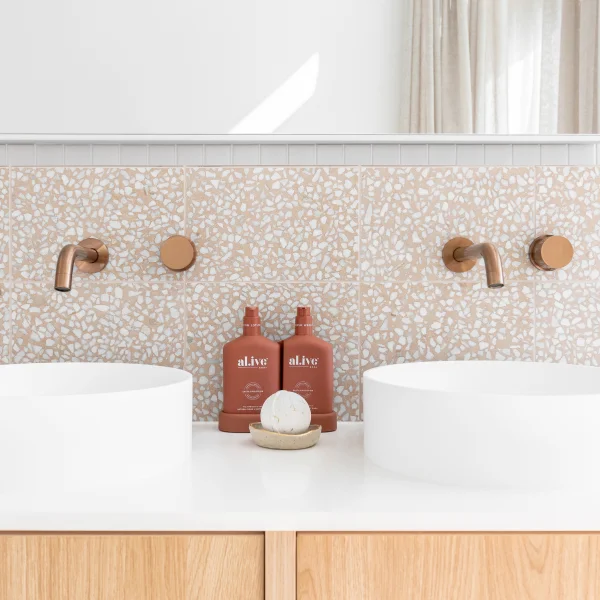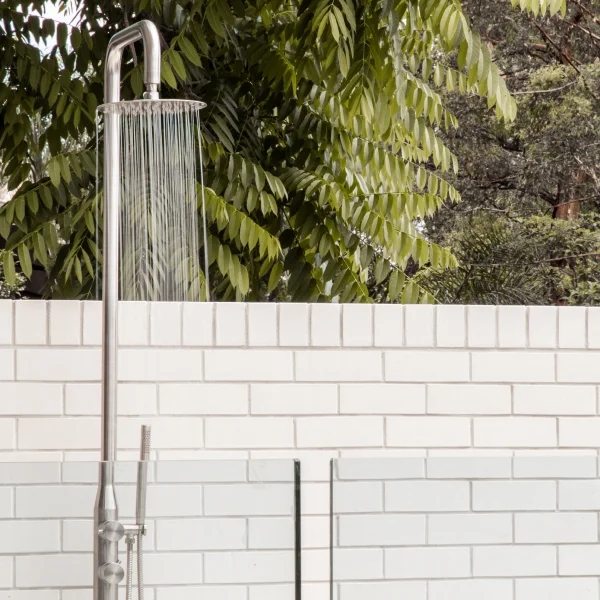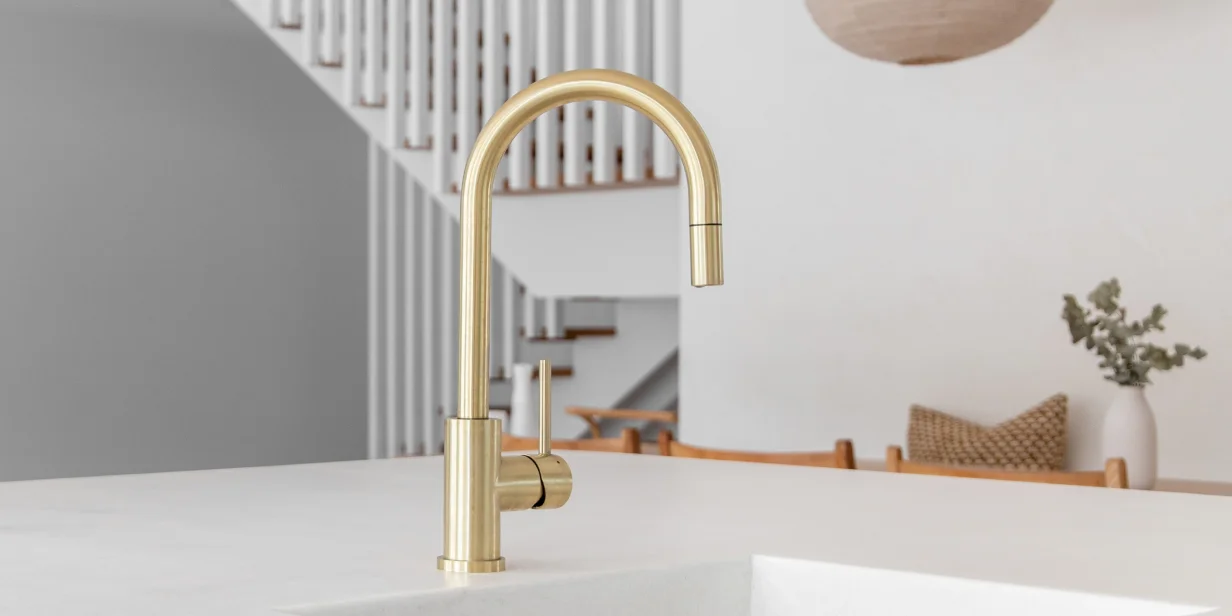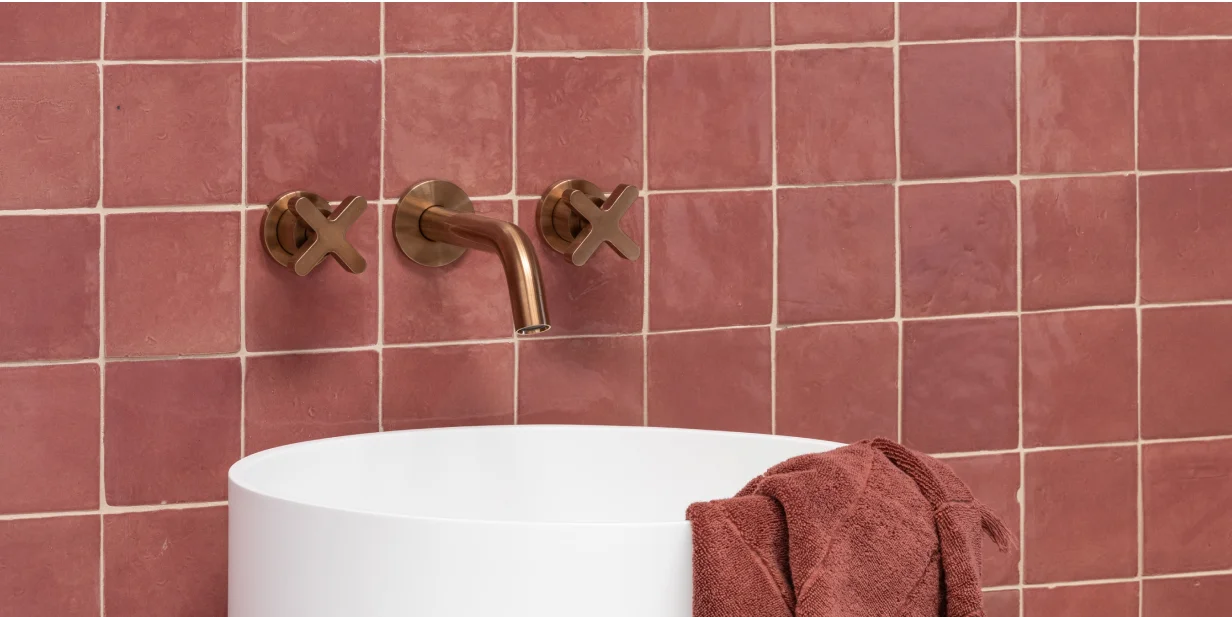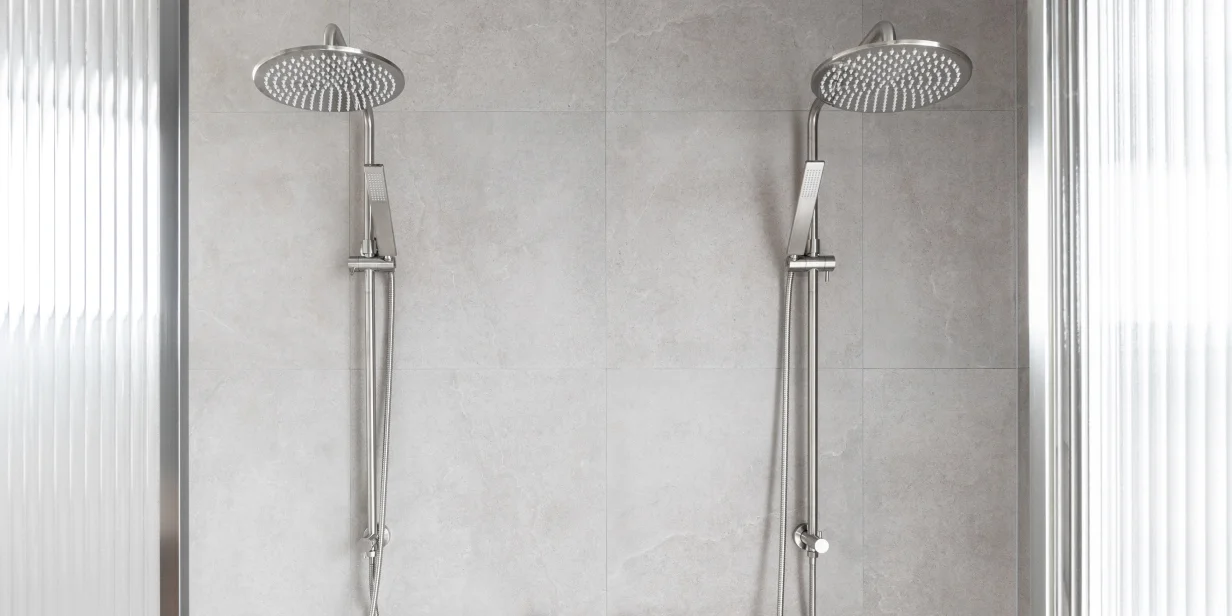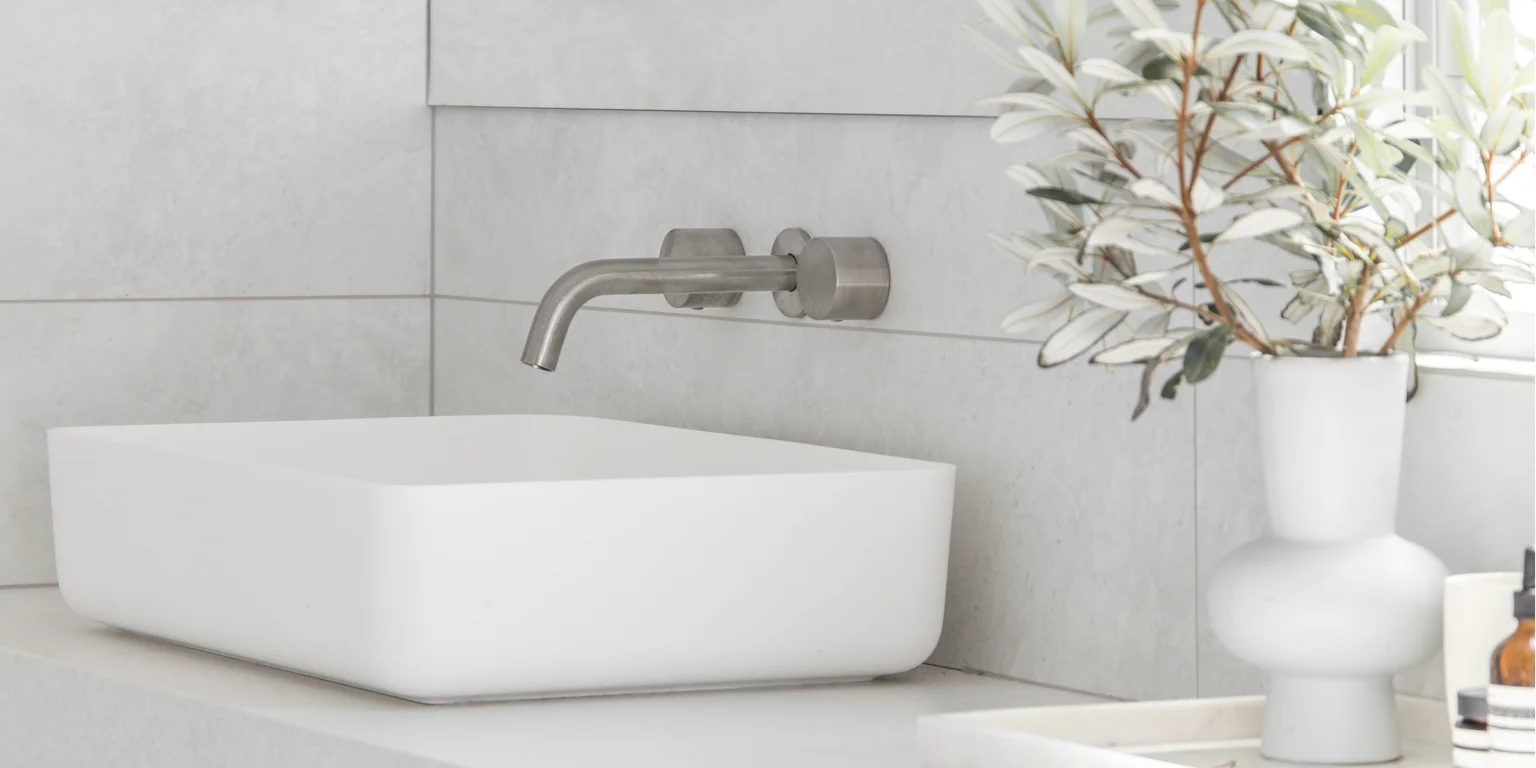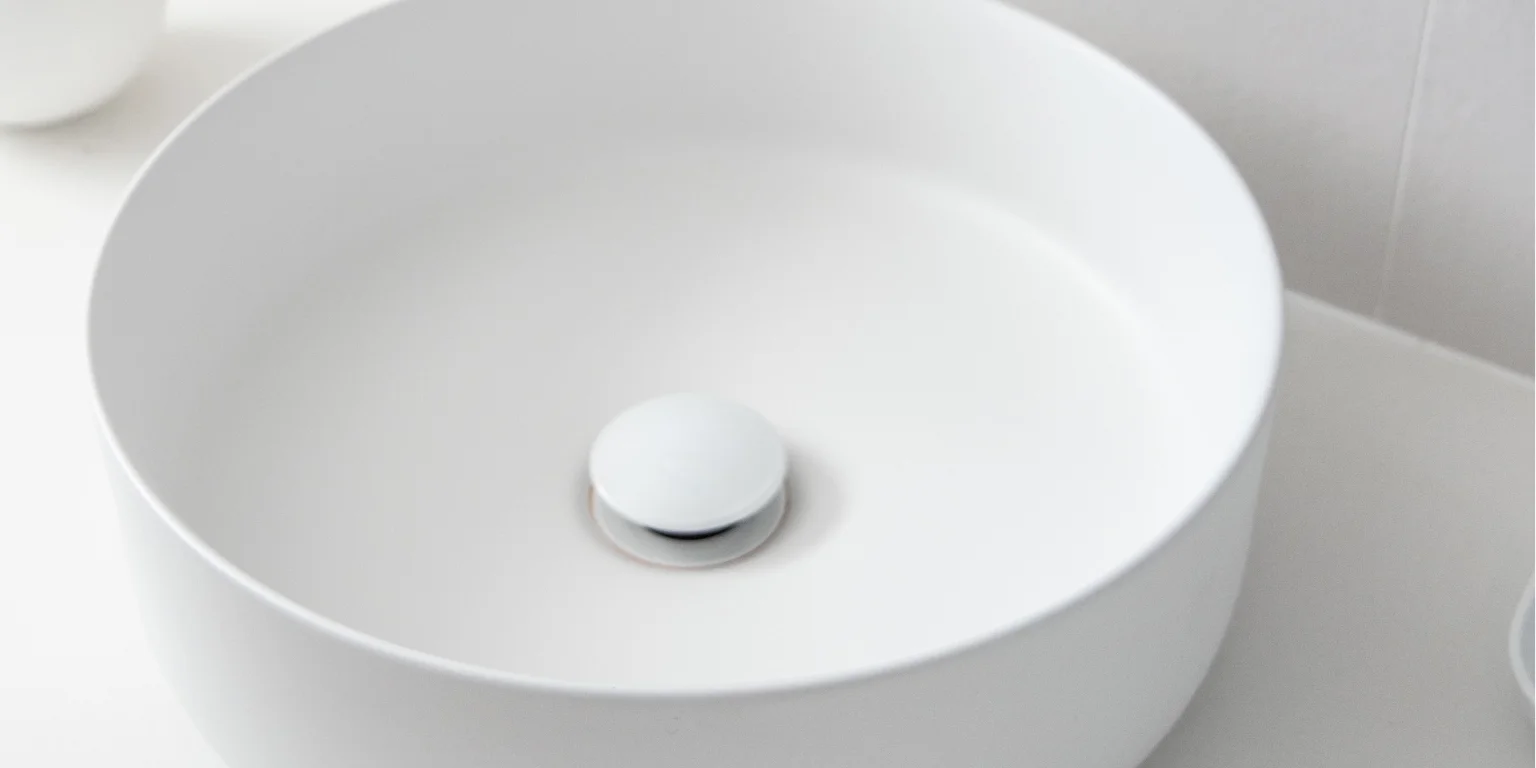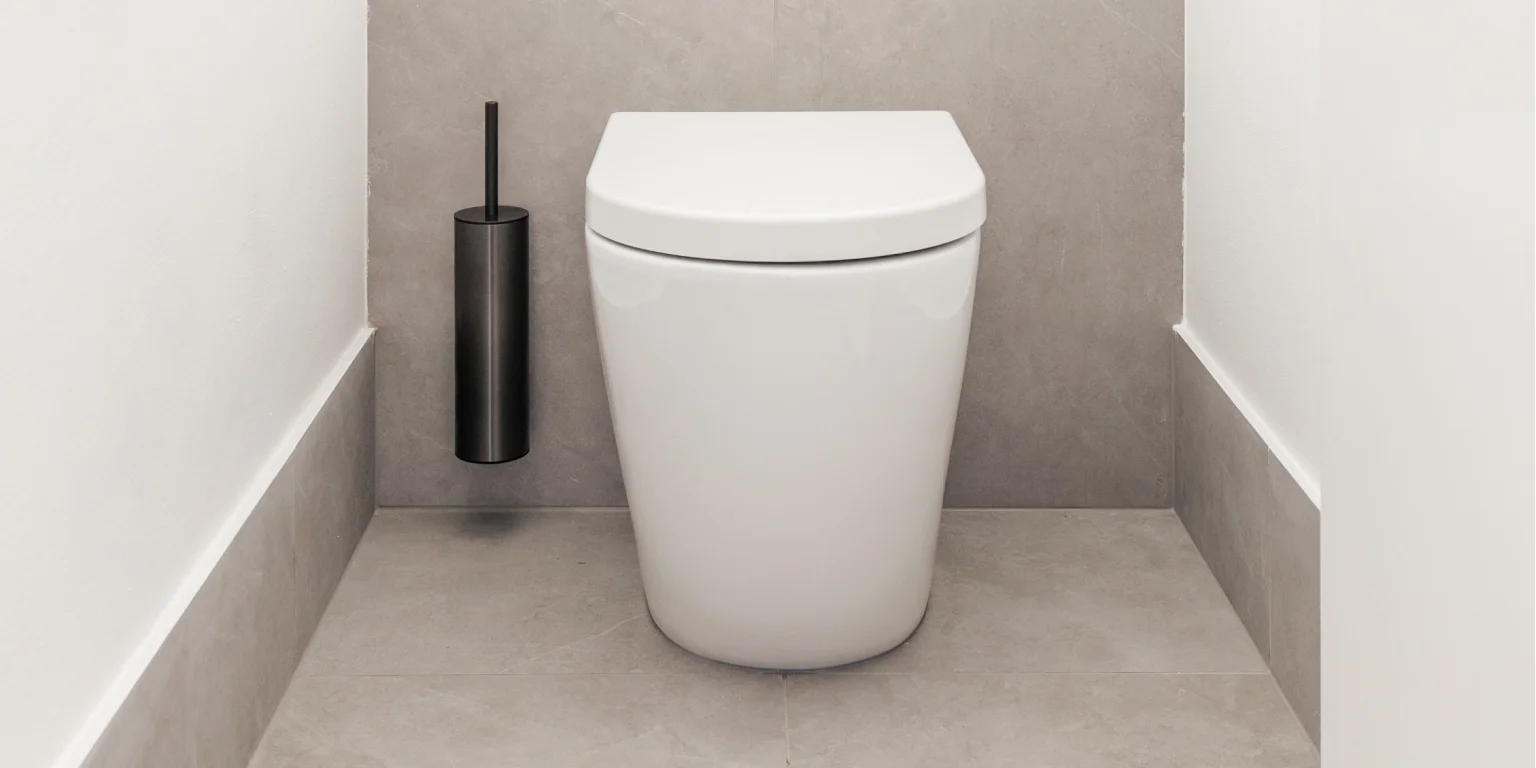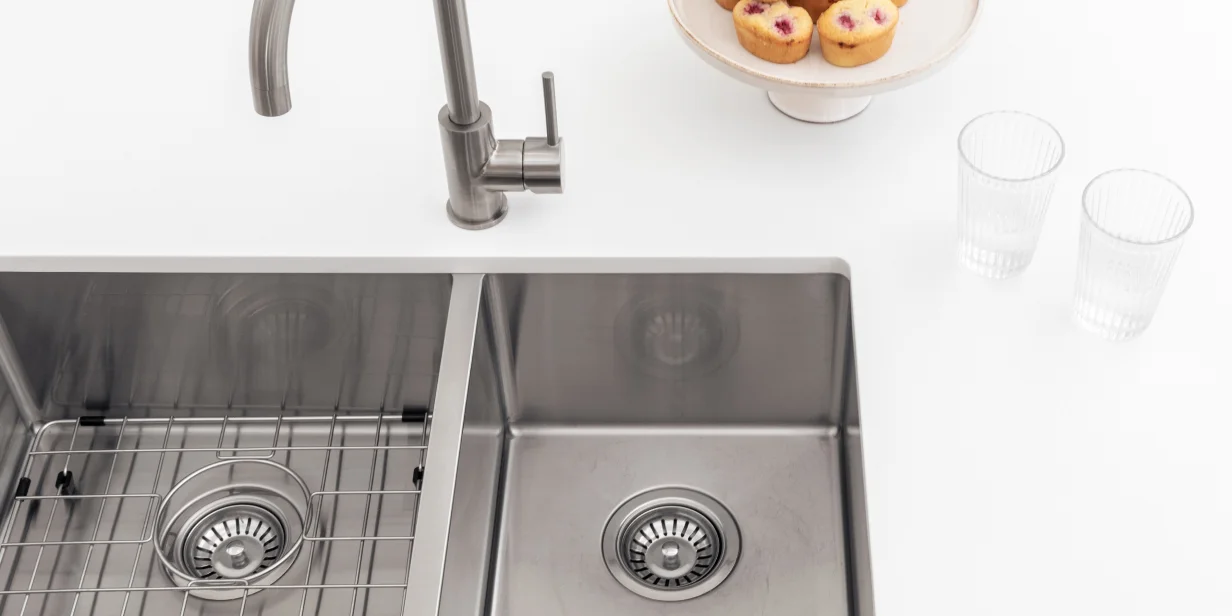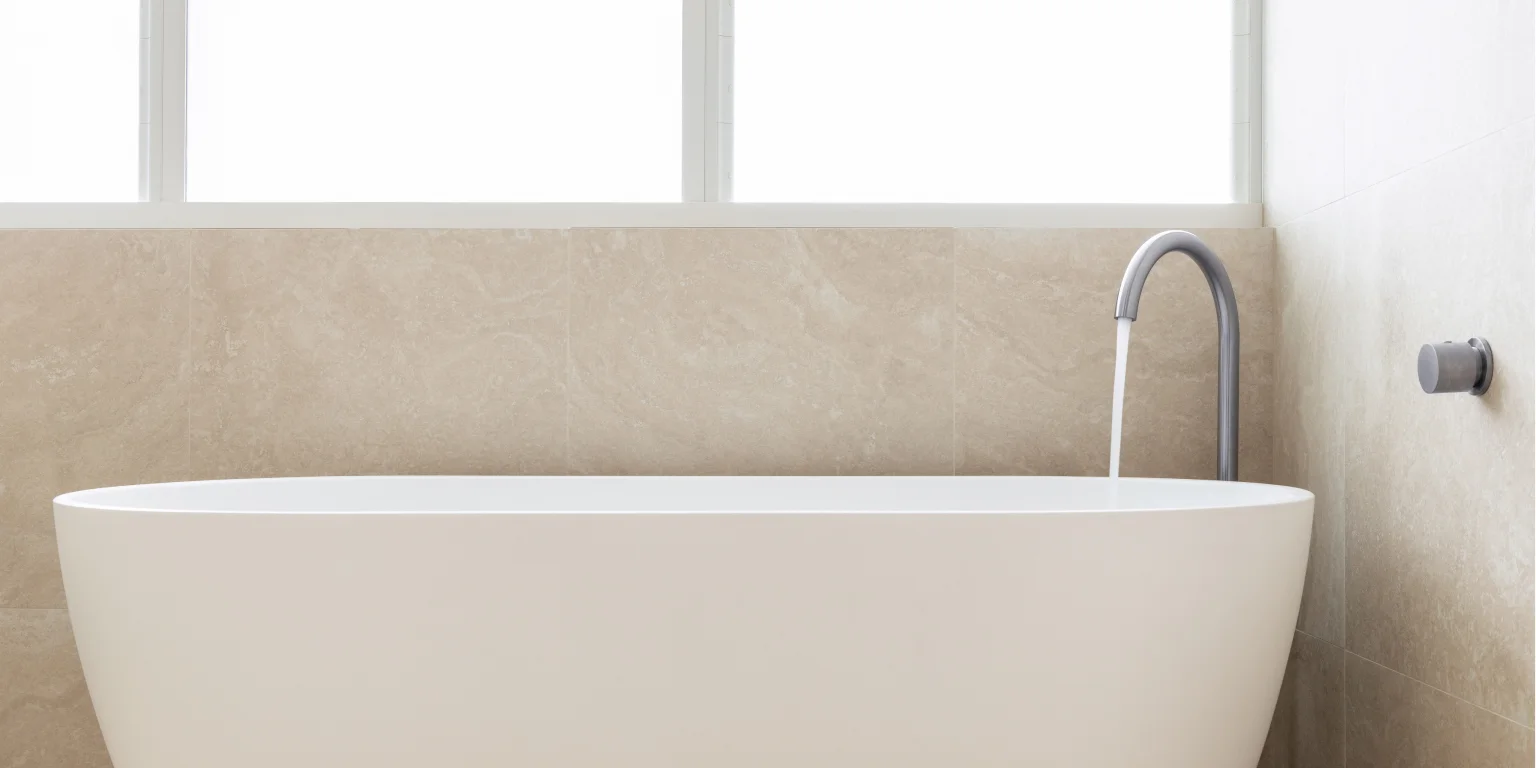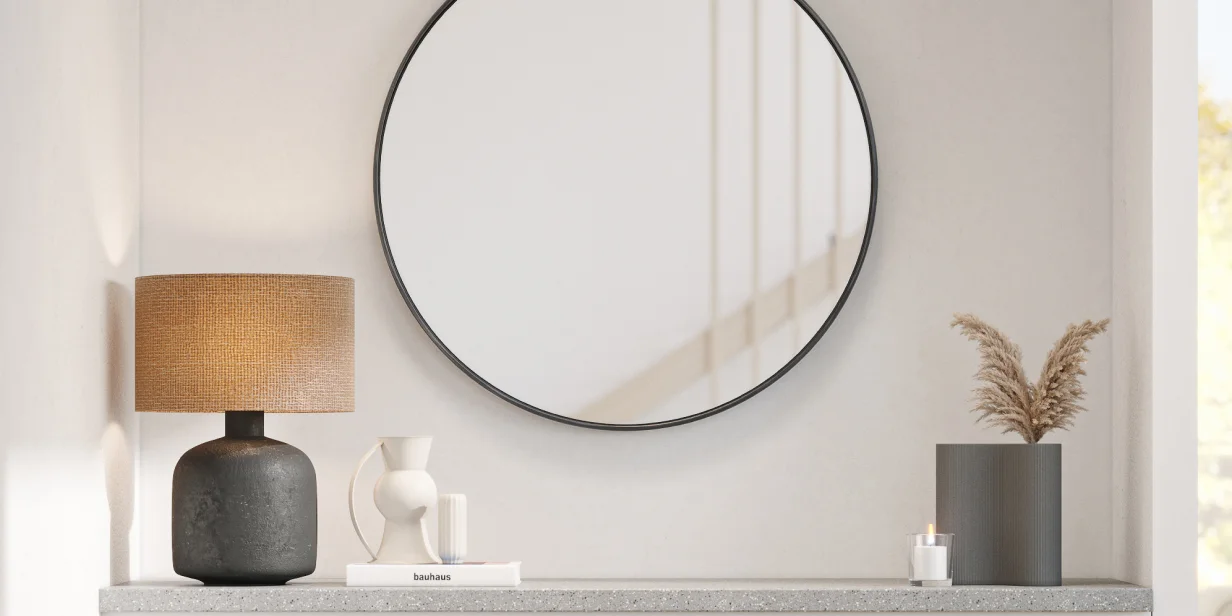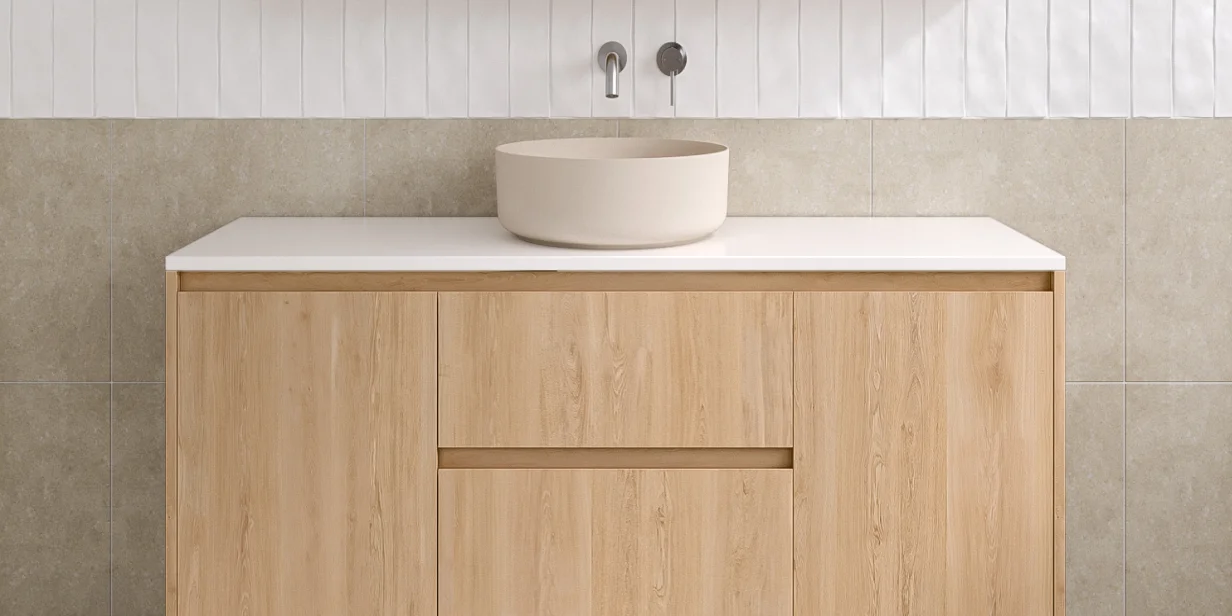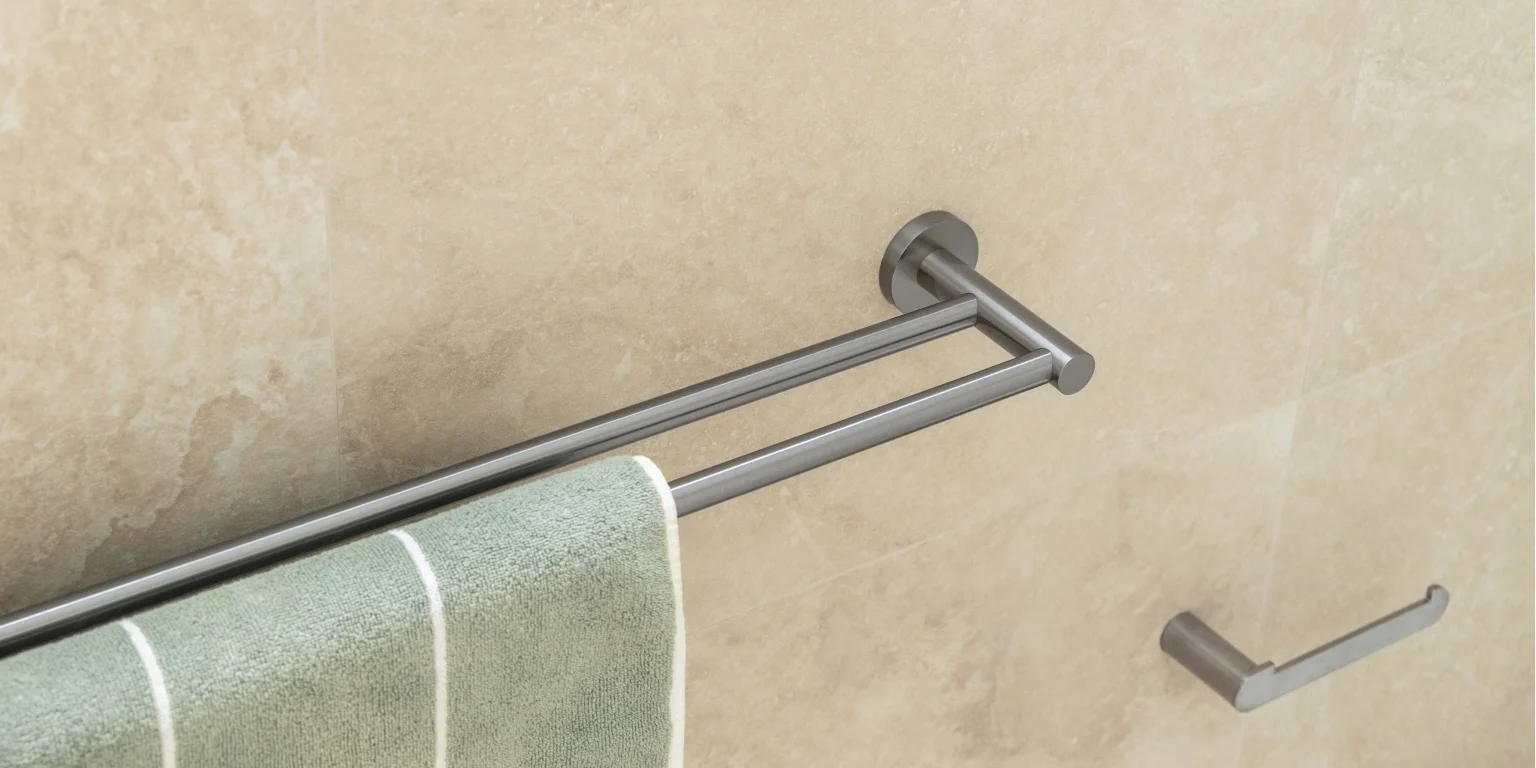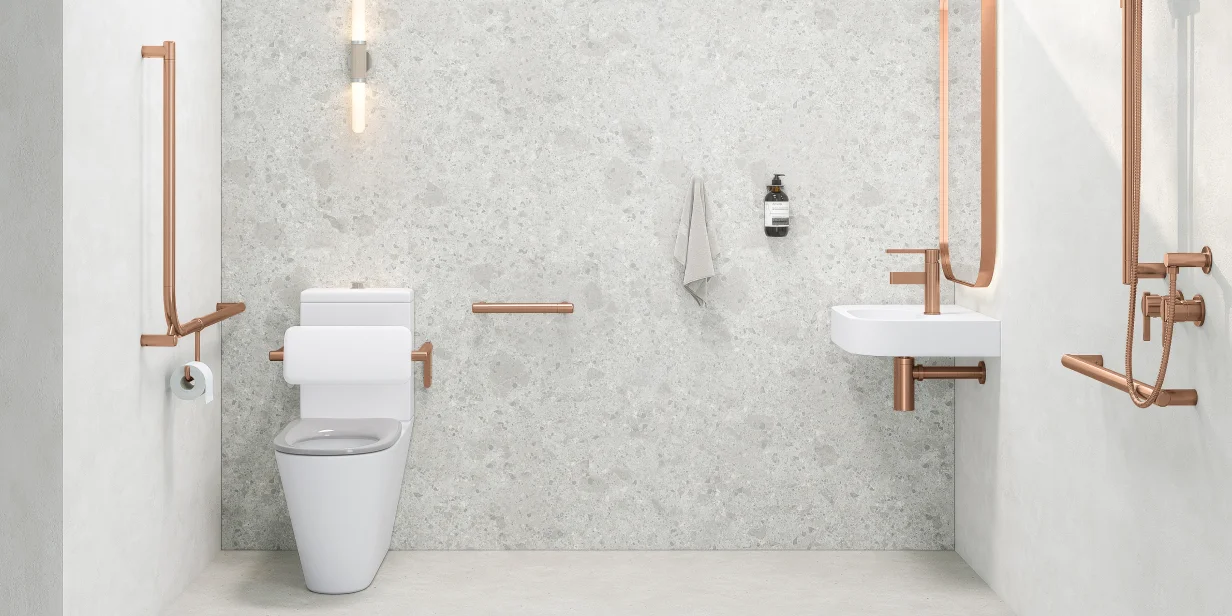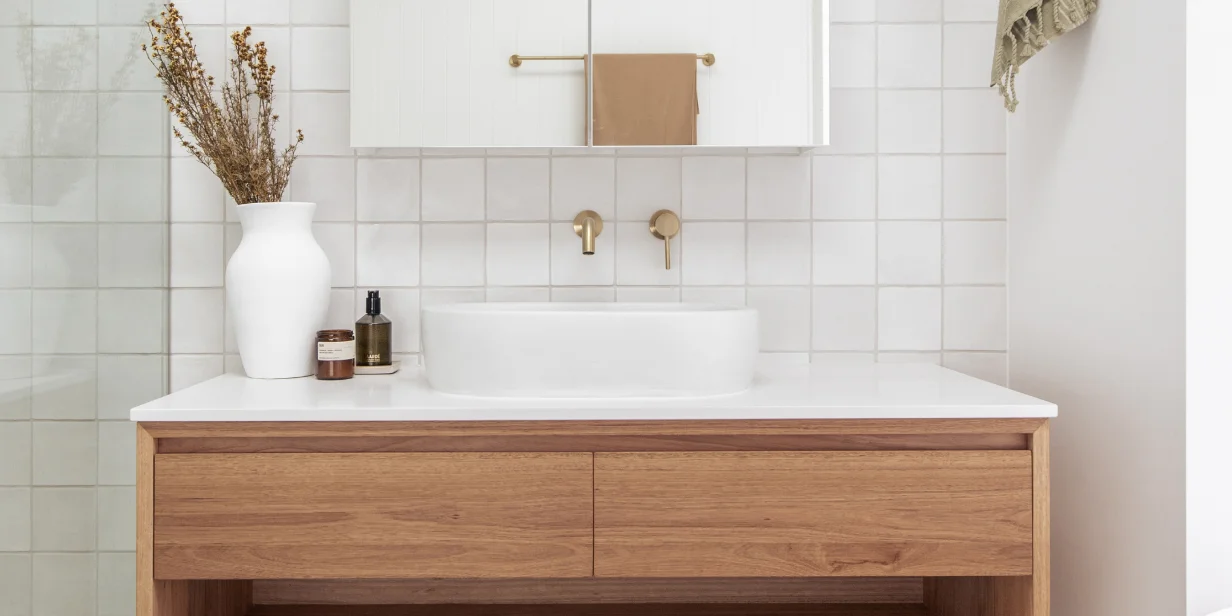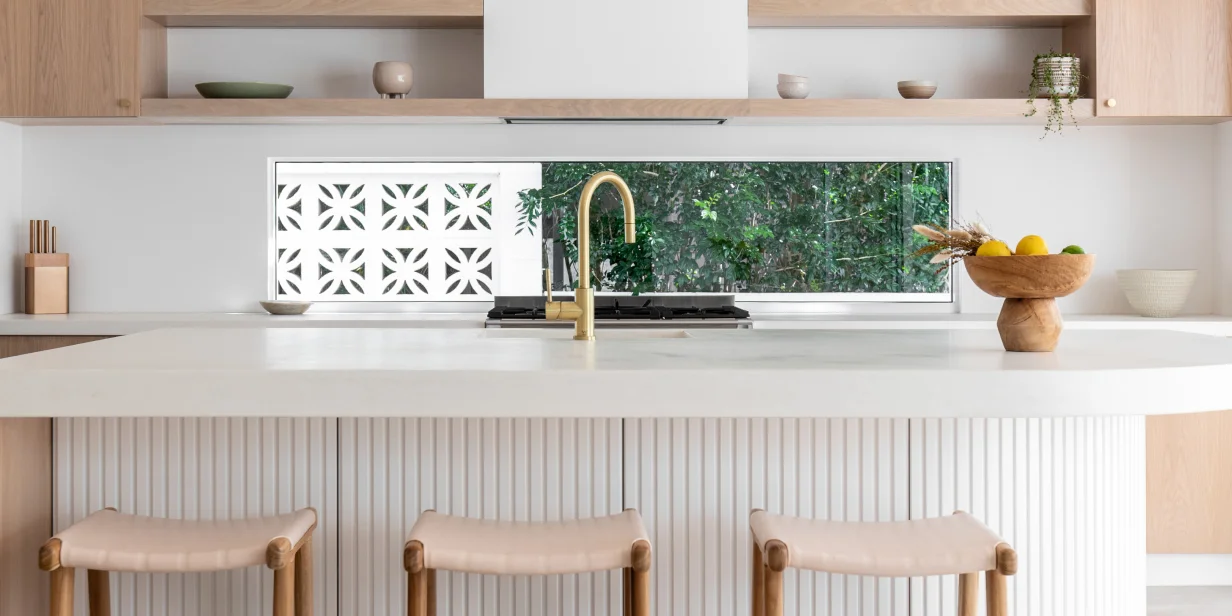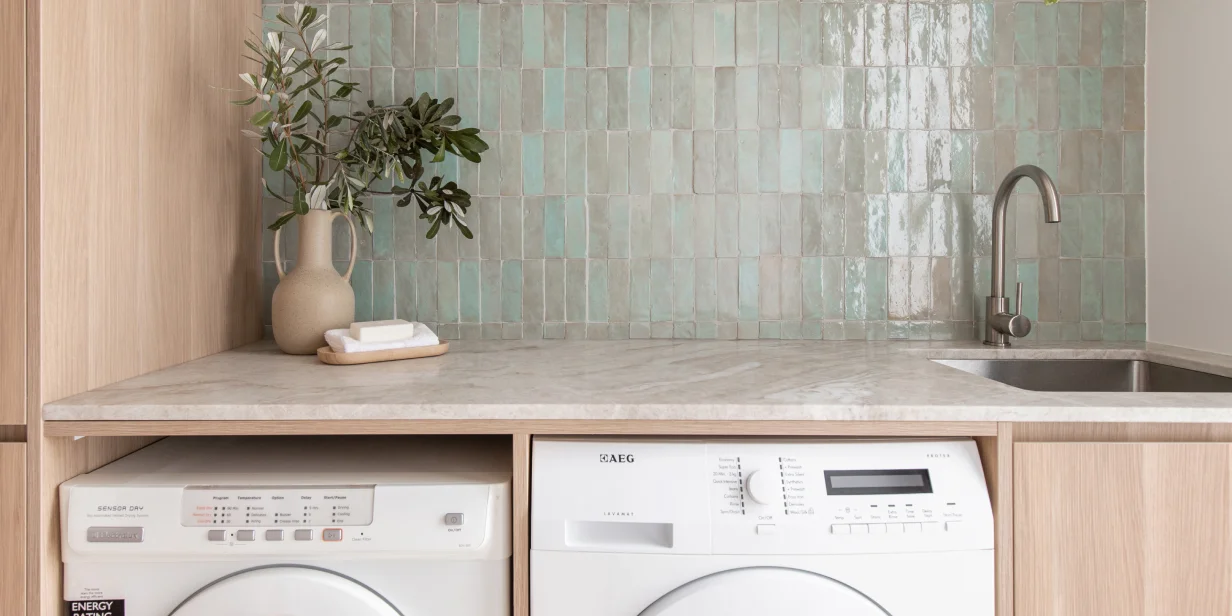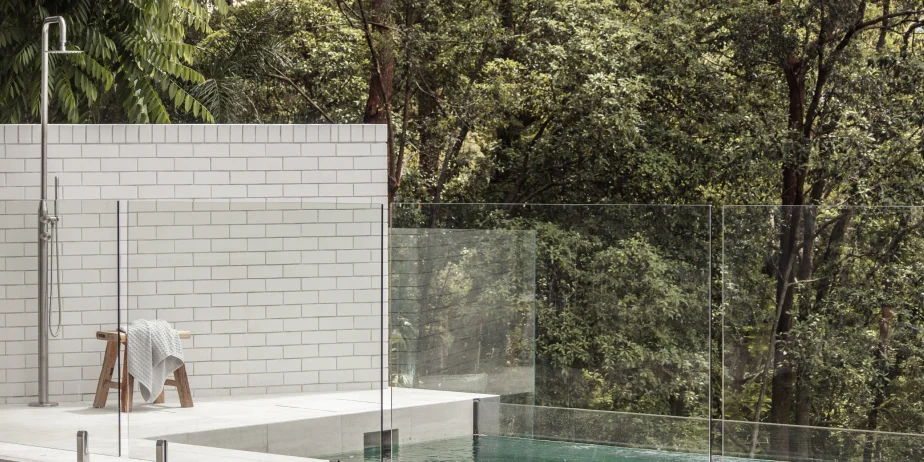How to Mix Metals: Our 3-Step Guide to Mastering the Trend Like a Pro

Following a prolonged dominance of natural woods and materials, expectations are high for the revival of metals in interior design in 2024, with particular interest surrounding mixing metals.
In recent years, designers have been steering more away from the flush, uniform look of one-tone styling instead of mixing metals throughout the home. This approach adds depth and character to a space, preventing it from appearing overly clinical or flat.
Yet, creating a harmonious blend of metals is more intricate than merely selecting and placing two metals in the same room. It demands careful consideration of multiple factors to ensure sophistication rather than a chaotic mismatch.
Join us as we delve into the art of blending metals, sharing our top three steps to successfully incorporating this trend into your home.
Step 1: Consider the Undertones

Exploring the world of mixed metals in interior design opens up a realm of possibilities, allowing you to create a visually appealing and dynamic space. One crucial aspect to consider when delving into this trend is carefully selecting undertones.
Warm Undertones
Warm undertones in metals can exhibit red, yellow, or brown hues, contributing to a sense of richness and depth. Examples of metals with warm undertones include copper, brass, gold, nickel or bronze, and although universally regarded as a cooler tone, our brushed gunmetal leans warm.
Cool Undertones
Cool undertones in metals typically have shades of blue or grey, imparting a sense of clean sharpness. These undertones can influence the overall aesthetic of a space, creating a more serene and contemporary atmosphere.
Examples of metals with cool undertones include stainless steel, chrome, and gunmetal. Stainless steel and gunmetal, for instance, often have a greyish appearance, while chrome can exhibit more of a bluish tint.
Brushed Nickel vs Stainless Steel
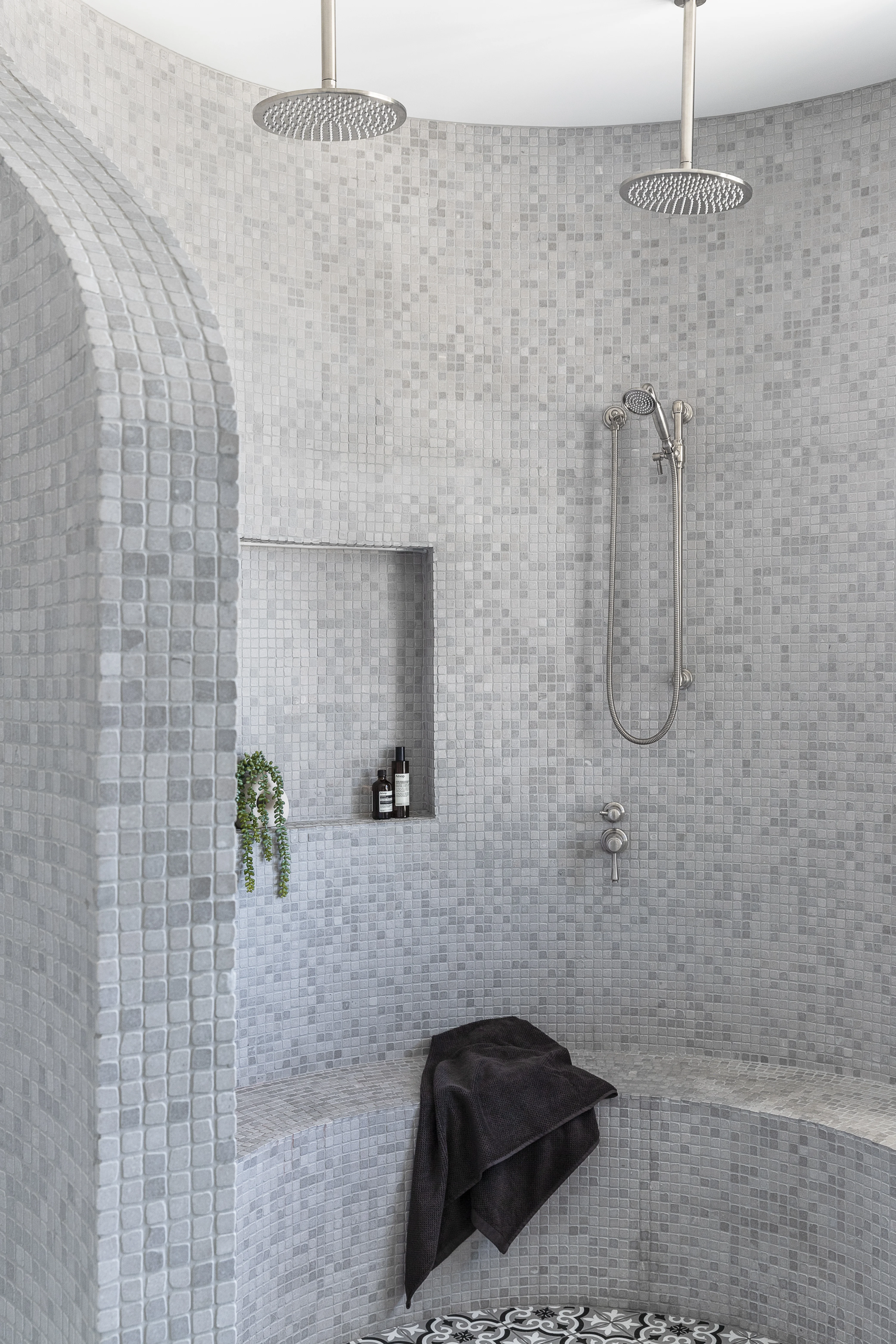
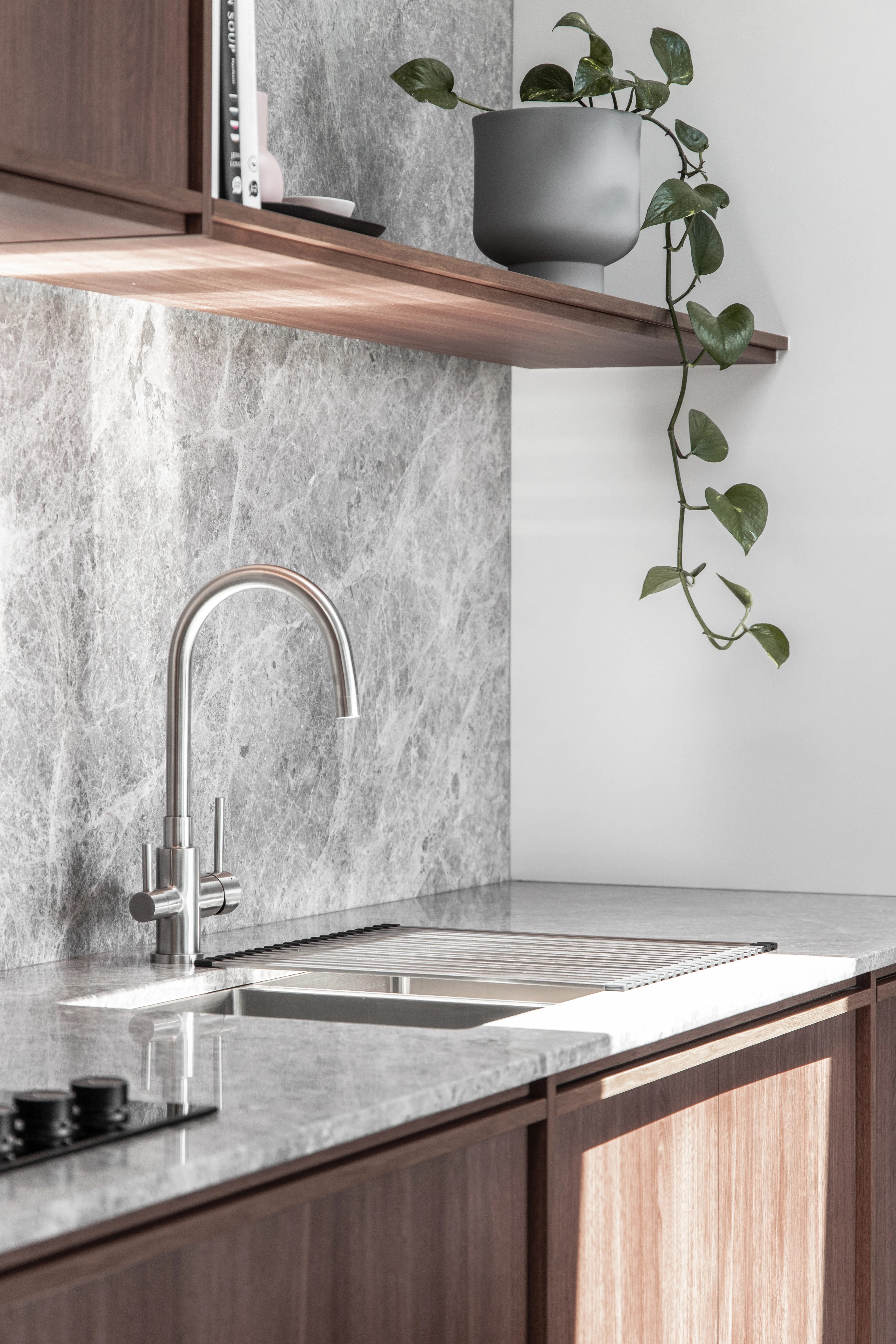
There is often some confusion when choosing the right type of ‘silver’ for your space, particularly in the debate of brushed nickel versus stainless steel or chrome. While stainless steel and chrome are known for their cooler undertones, as stated previously, brushed or polished nickel is considered to have warm undertones. This distinction arises from its tendency to display a subtle golden or yellowish hue, which becomes particularly noticeable when juxtaposed with the cooler tones of stainless steel and chrome.
Neutral metals
Black is a neutral metal tone, leaning neither cool nor warm, making it adaptable to various environments. Although brushed nickel is typically recognised as a warm tone and stainless steel as cool, both metals can be seen as neutral due to their ability to easily blend with contrasting colour palettes, offering a subtle point of difference to a scheme.
How to Choose Which Metals to Mix

When considering mixing metals, start by assessing their undertones. You can either pair them within their respective tone palettes or choose a contrasting effect — for instance, introducing touches of brass amidst chrome or vice versa.
A general guideline followed by many designers is to steer clear of placing overly similar shades together, like brass and gold or nickel and stainless steel, as this can look unintentional and messy. Similarly, avoid combining significantly different undertones, such as brass and gunmetal, as this can look disjointed and cause other aspects of the room to feel off.
Regardless of the tone palette you decide on, moderation is key. Opt for a dominant metal and introduce the additional metal in small doses to prevent overwhelming the senses.
Step 2: Choose the Finish
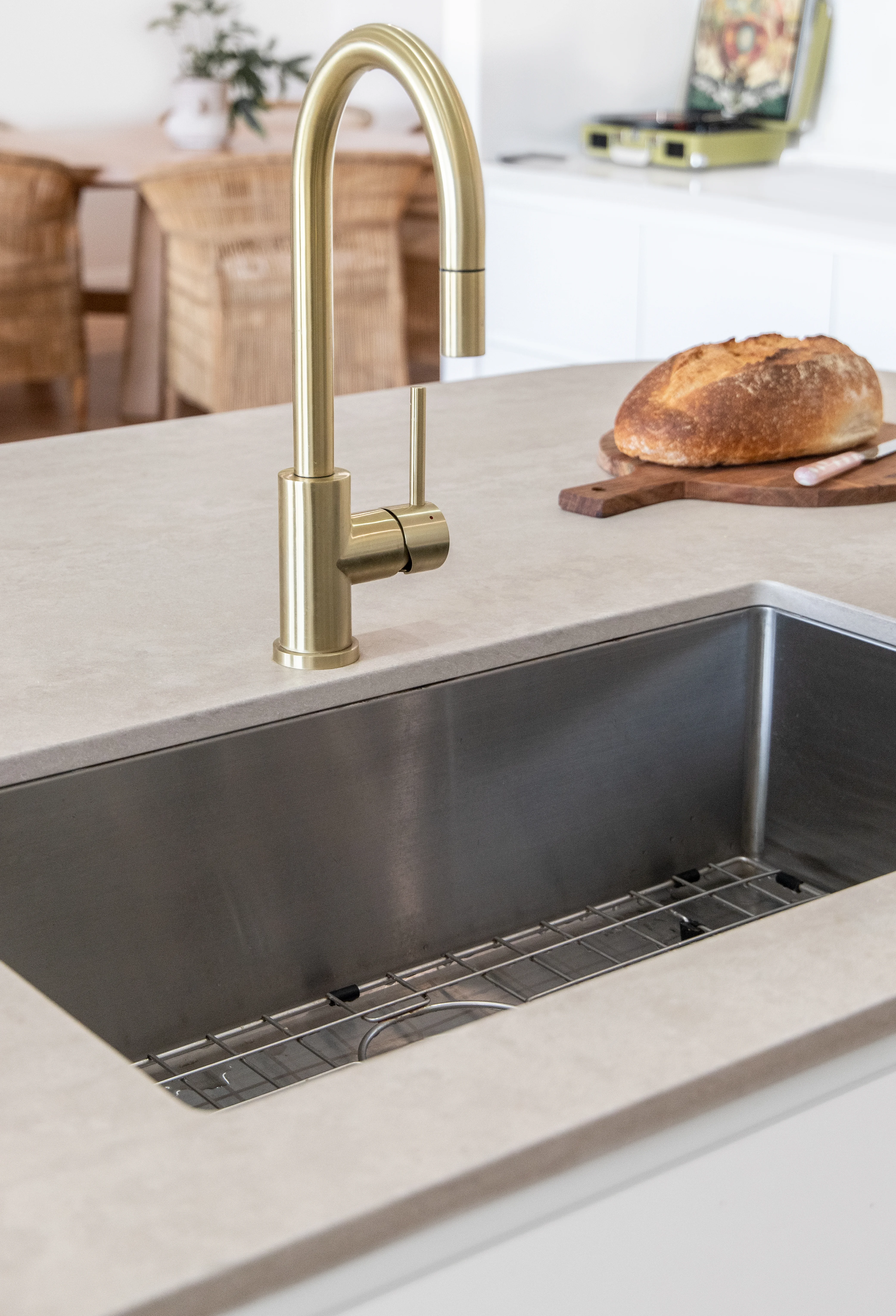
When deciding the type of finish for your metals, consider the interplay of brush strokes and finishes to ensure a balanced scheme. Different finishes, whether brushed, polished, or hammered, create unique textures and reflections, contributing significantly to the overall look of your space.
For example, pairing brushed nickel with matte gold provides a subtle contrast and perfectly balances elegance and modernity. Simultaneously, the brush strokes influence how light interacts with metal surfaces, offering a delicate equilibrium that prevents the space from becoming overly bright or dull.
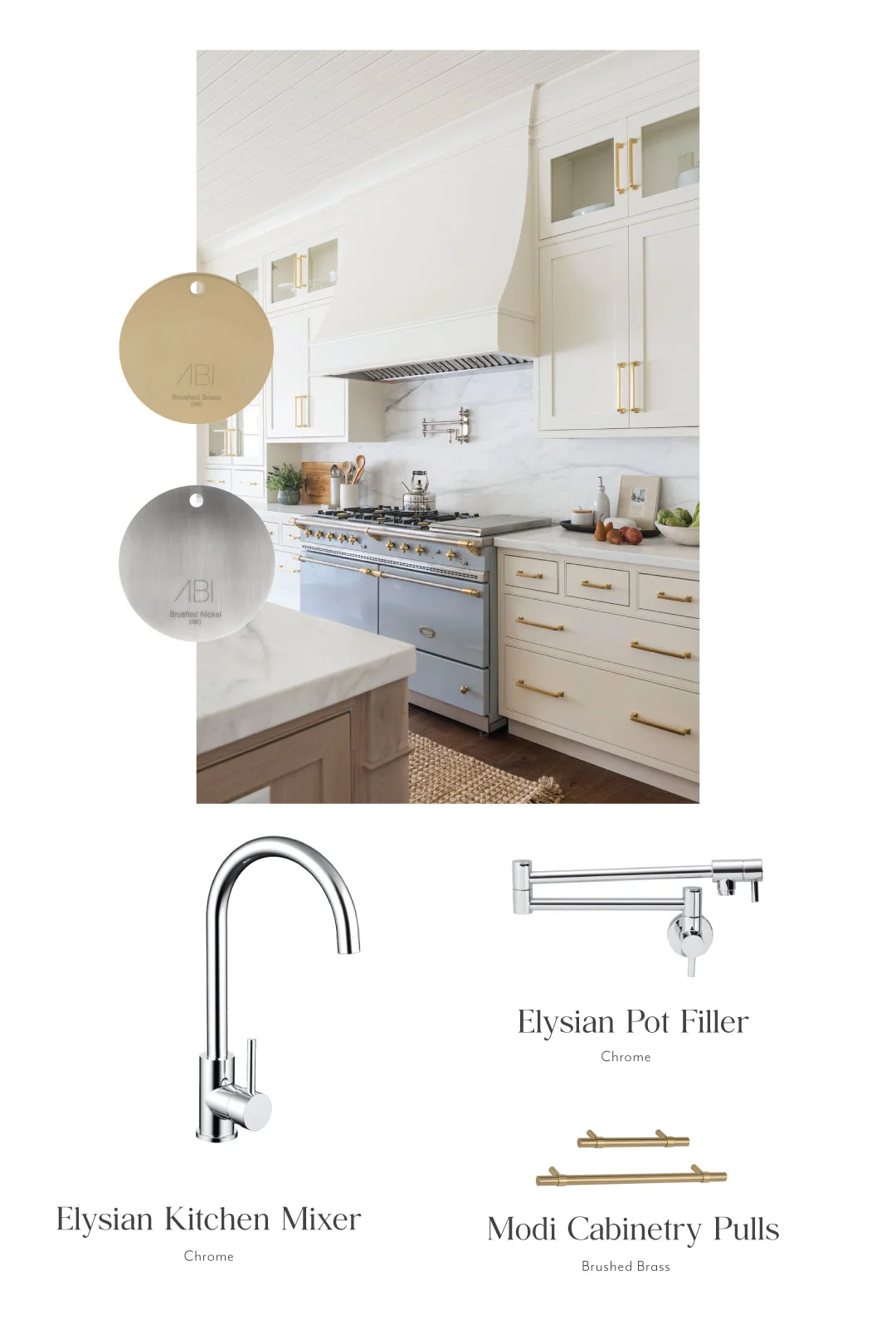
This careful combination not only elevates the visual appeal of your interior but also contributes to the overall atmosphere you wish to create. However, similarly to choosing too close of an undertone, mixing finishes can sometimes result in a messy appearance. We suggest maintaining a cohesive finish across all metals or including at least one brushed finish, as it is the most versatile choice.
Step 3: Mix Metals According to the Room’s Size
When assisting clients in selecting tapware, a common question we receive is, 'Can you blend metals in a bathroom?' and the answer is always: ‘Yes!’. Incorporating a mix of metals in any room can contribute to a carefully curated and inviting atmosphere, infusing character into spaces instead of appearing overly uniform. The crucial aspect of successful metal mixing lies in doing it selectively. Excessive blending of metals has the potential to make a space feel overwhelming and cluttered. To help avoid making this mistake, a useful guideline designers use is restricting the variety of metals to one or two in smaller rooms and up to two to three in larger spaces.
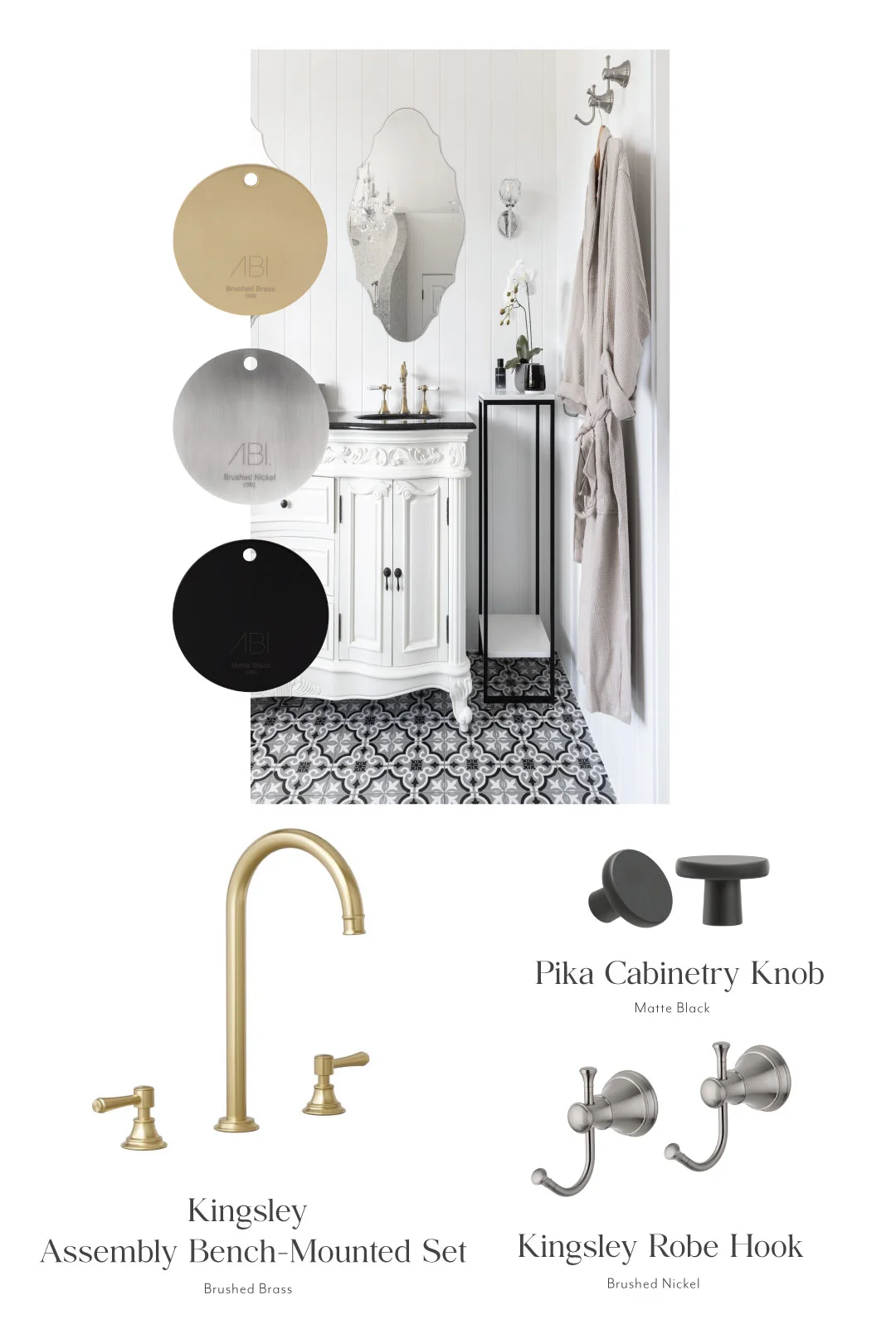
For instance, a laundry or powder room should feature no more than one dominant metal, with occasional accents of a different metal, for an effortlessly balanced aesthetic. However, a kitchen can afford up to three mixes of metals due to its more open and expansive layout. For the kitchen, consider mixed metal cabinet pulls, varying the metals between knobs and large pulls, with the additional option of again mixing tapware or appliances.
Finally, for a mixed metal bathroom, having one dominant metal, such as all tapware in polished chrome, complemented by an accented metal, such as brushed brass mirrors, provides a subtle yet effective contrast. However, be wary of mixing in close quarters, such as having shower heads and mixers in opposing metals, as this can feel cluttered and overwhelming, so keep the mixing simple and sparse in smaller areas.
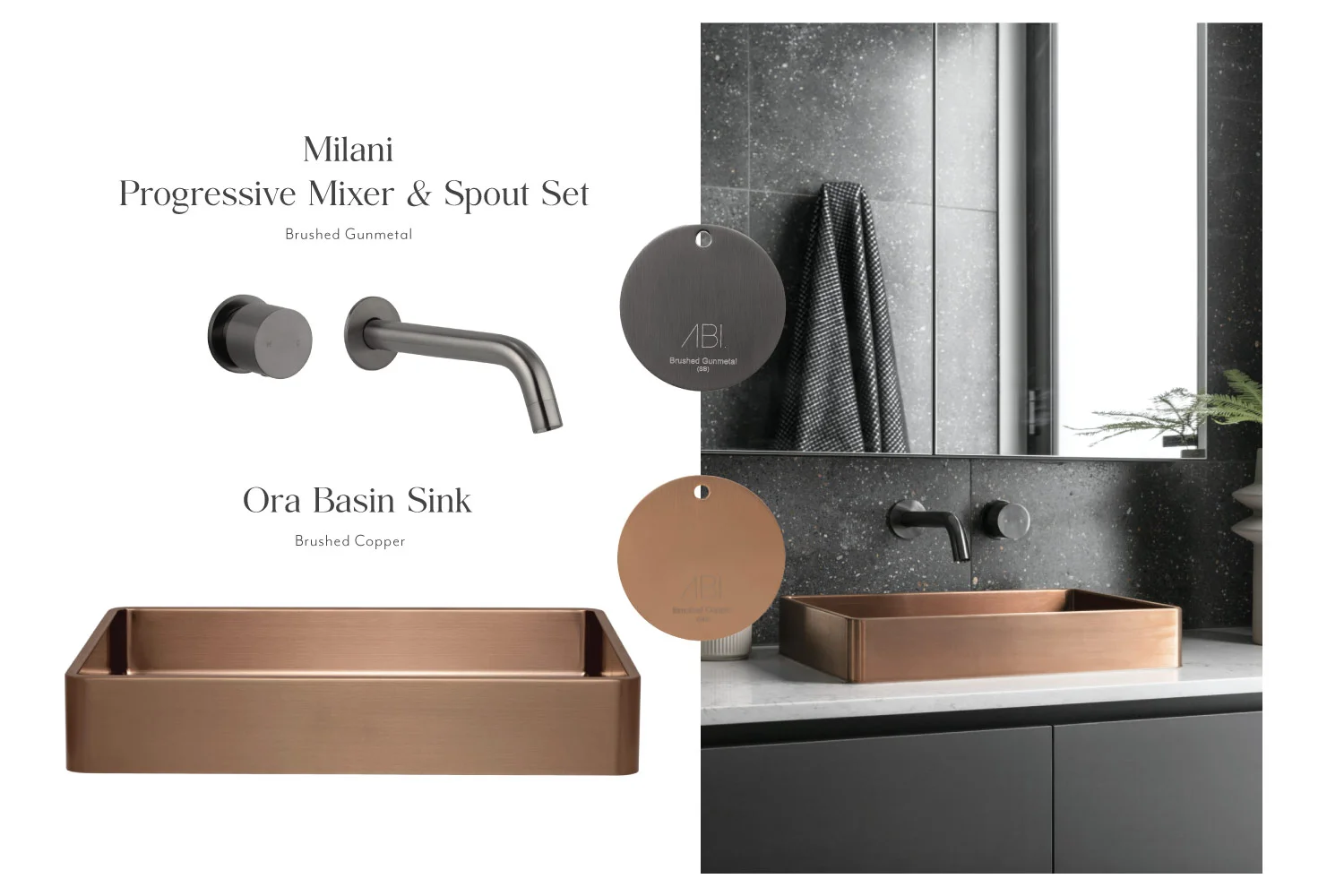
Mastering the art of mixing metals can be challenging without a strategic game plan. But, with our three-step approach to choosing the right metals for your space, you're guaranteed to effortlessly embrace this trend with the expertise of a seasoned pro.
Want some more design inspiration? Check out 5 Home Renovation Mistakes and How to Avoid Them.
